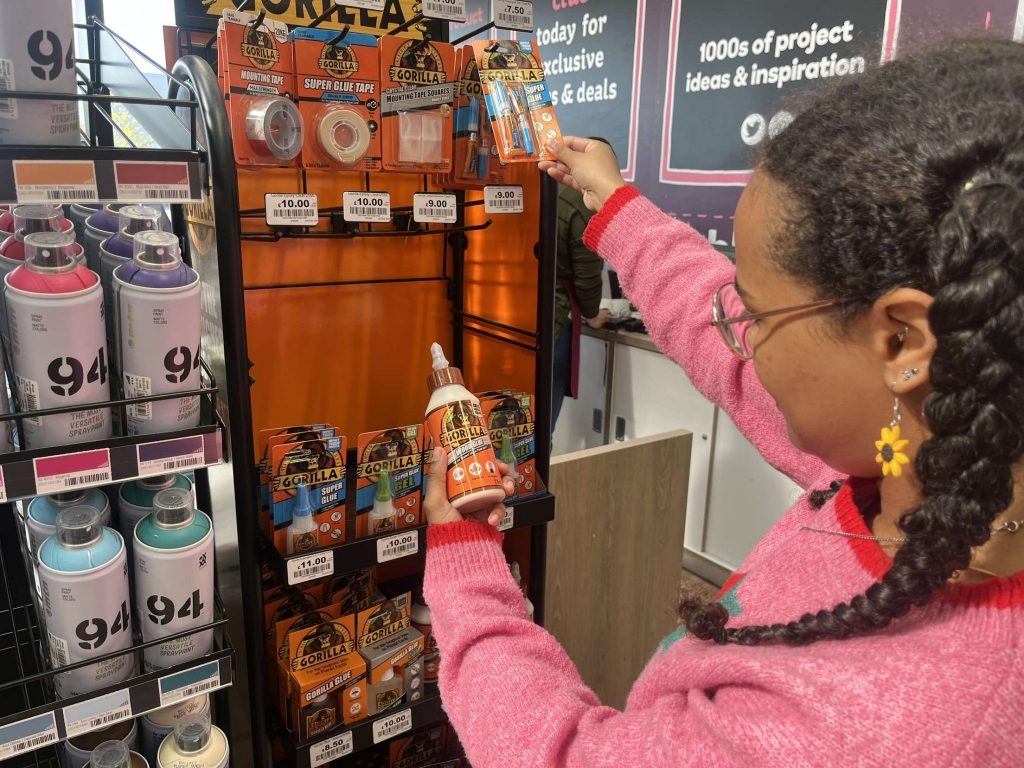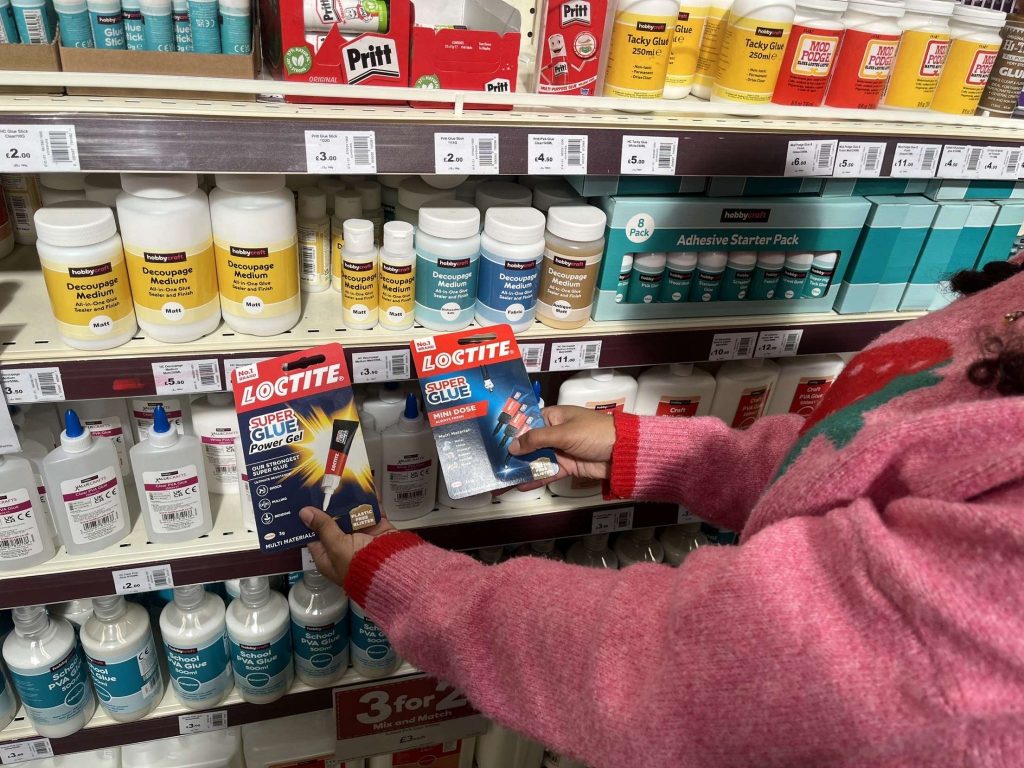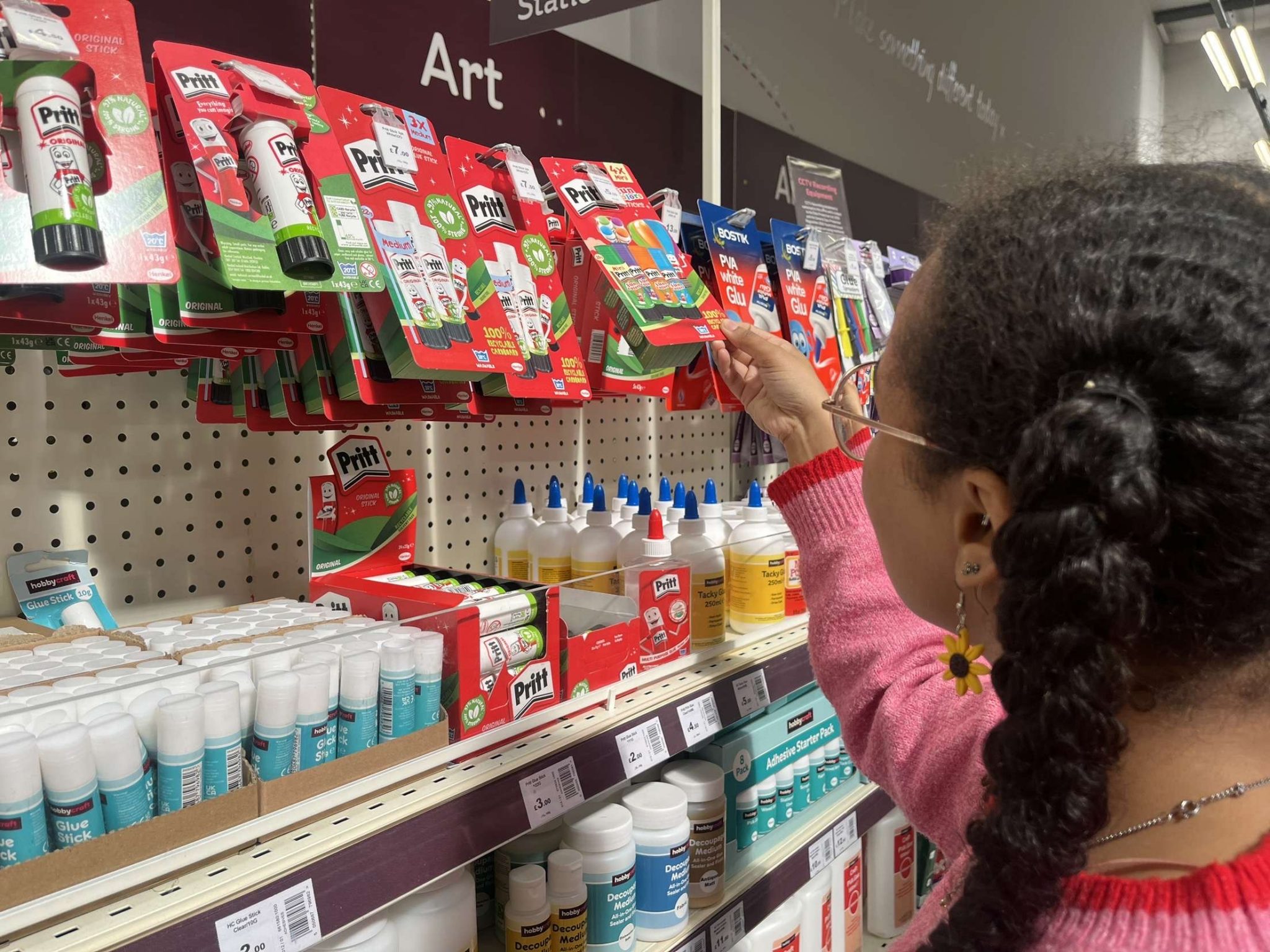As the first daffodils open, and the sun stretches over the green hills of Kent, I get the urge to document the whole process. My personal journey with junk journalling has been turbulent but I have finally found a process that works for me. I set up all my sweet wrappers and pressed flowers, highlighters and photos and then I am forced to acknowledge my worst enemy: the glue stick. Its consistency displeases me, and I am suspicious of its full name – PVA: isn’t that a plastic? Seething, I continue to stick my collection down, but the glue is now on my hands which are now sticky. What has been described to me as a ‘peaceful outlet’, and my only form of artistic expression, has been ruined by this yucky mess. While I know I’ll eventually be pleased with the outcome of my project, I am unable to hold it together knowing that so much of the glue available to unsuspecting crafters is not good for the world we live in. Let’s explore the sticky situation that glue puts us in.

Peeling Back the Sticky Past of Glue and Unsticking our Present
Plants served as the chosen material for the earliest glues – the oldest known adhesive, made from plant gum and red ochre, dates back to around 70,000 BC and was discovered in South Africa. Over time, people began experimenting with animal parts in order to make glue; teeth, hooves and fish air bladders were all materials used to create glue. By the medieval period, monks were using glue made from egg whites to bind books and apply gold leaf to furniture. These early glues were used to repair ceramics and make weapons and canoes across many different cultures.
Today’s ‘natural glues’ remain close to their original formulas and have been linked to animal welfare concerns and subpar performance. The 18th century marked the arrival of the first commercial glue factory based in The Netherlands, which also used animal hide. The production of ‘natural glues’ that make use of animal-derived materials raises ethical concerns – such as the welfare of the animals and the environmental impact that occurs when animals are raised for glue production, these being habitat destruction and the increase greenhouse gas emissions due to the carbon footprint that it takes to raise and then slaughter the animals.
Alternatively, synthetic adhesives are regarded as more versatile and less harmful to animals. However, it is far from perfect. Plastic polymers make up a high percentage of the ingredients required to make glue, which are derived from petroleum. Petroleum is a fossil fuel which releases greenhouse gases into the atmosphere and can contribute to climate change – this means that it harms the world around us long after it has already been extracted out of the ground.
Many glues are made from polyvinyl acetate (PVA) which is a synthetic plastic polymer, this means that it is a plastic. PVA is often found in many everyday household products such as dishwasher and laundry pods and sheets, in the wrapping or sheet itself. According to a study titled ‘Degradation of polyvinyl alcohol in US wastewater Treatment Plants and Subsequent Nationwide emission estimate’, PVA does dissolve but it does not always biodegrade. This means that over 75% of PVA persists in waterways and soils in the United States, and flows through wastewater and back into the environment. Although PVA is a known plastic, further research needs to be advocated for to find out the specific impact of PVA on the environment as it enters our water and soil – perhaps permanently changing our world.

Let’s Get Tacky – How to Hold Things Together Without Glue
It’s time for us to move forward: we are not stuck, there are plenty of alternatives to glue and plenty of glues that are better for the planet! Let’s keep things simple. Sometimes overcomplicating an action may make us feel less like we can have an impact, so we will revert to a very simple system: Reduce, Revise and Rethink.
Firstly, you can reduce your use of glues by considering whether you need to use glue for a particular project after making use of what you already have.
Next, you can revise your use of glues by using alternatives. Consider using paper tape or traditional washi-tape which is made from paper and a sugar-based adhesive and so generally recyclable, or even biodegradable.
Finally, try to rethink your use of glues through considering how you will use glue if it is essential to your hobby or work, such as using compostable glues or doing research on company supply chains. For example, when I finished my previous glue and wanted to find an alternative to the one I had used, I found that Henkel, the creator of the Pritt Stick has 97% natural ingredients and considered to be vegan, with the materials used being made with up to 65% of recycled plastic and with clear and accessible recycling instructions. The other 35%? Henkel tells their consumers that specific components must be made from virgin materials and why – showing that they’re willing to be transparent about their impact. The more transparent the company, the better as it will allow you as a consumer to form your own opinion on the product based on your values.
Let’s Seal the Deal
As we peel away the layers of glue’s sticky history and environmental impact, it is obvious that its impact cannot be sealed away. Despite significant steps in the right direction, the glues we use today come at a steep cost to our ethics and our environment. However, by making small changes we can help stick to our hobbies without compromising the health of our planet – lets reduce, revise and rethink our consumption of PVA and bind this chapter to the past.
Sources:
- https://baynebox.com/news/the-history-of-glue
- https://endlesspens.com/blogs/endless-journal/is-washi-tape-recyclable?srsltid=AfmBOorFqvNpxBR0uqo3_29uMLP6m3UYueticXDjm6LDJX-1YZD-Qp_f
- https://www.treehugger.com/what-glue-made-4847390
- https://www.blueland.com/en-gb/articles/what-is-pva-and-its-impact-on-the-environment
- https://www.henkel.com/press-and-media/press-releases-and-kits/2021-01-19-pritt-the-nations-favourite-glue-stick-more-sustainable-than-ever-1144970
 Sustainability
Sustainability Bethany Climpson
Bethany Climpson 856
856


